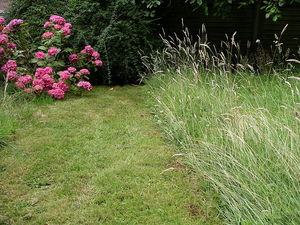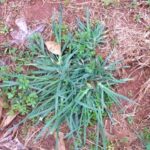Reseeding grass is a common task to undertake during a lawn renovation. While there is some discussion about whether fall or spring is the most opportune time, the best way to reseed the lawn clearly calls for an autumn date. So how do you do it?
The “Why” of Reseeding Grass
Fall grass reseeding improves the quality of an otherwise damaged lawn. Removal of crabgrass, drought conditions and mistakes in the application of fertilizers — or simply pest damage — may have led to a destruction of some portions of the grass surface.
The University of Minnesota indicates that reseeding lawn areas with about 20 to 25 percent surface injury is optimal, but even areas with up to 40 percent damage is still acceptable.
Planning the Lawn Renovation
Investigate the cause of failure
The best way to reseed the lawn in fall begins with a fact-finding mission that determines why the grass is dying off to begin with. A lack of nutrients, an overage of shade or sun exposure and even a change in soil composition may account for dying grass.
Consider changes to the landscape
For example, the homeowner who removed a bunch of trees — only to learn that the lawn favors shady conditions — has little choice but to consider reseeding grass of a variety that thrives in full sun.
Take a soil test
The application of lime, fertilizers, pesticides and other chemicals may have harmed the grass as well. A soil tests determines the acidity of the growing environment, which allows the gardener to choose a grass variety that will tolerate the conditions or lead the way to mitigating options.
Purchase an appropriate seed mix
Fall grass reseeding with the same type of ground cover that is currently failing is likely to result in more failure. As a general rule of thumb, use a 50/50 mix of Kentucky bluegrass (i.e. South Dakota Certified) and fine fescue for sunny areas and a 60/40 mix of fine fescue and a shade-loving Kentucky bluegrass (such as Nugget) for shaded areas.
Nuts and Bolts of Reseeding Grass
Remove weeds (the hard way)
Resist the urge to rely on a broad spectrum herbicide to do your bidding. While it may kill the weeds, it may also harm the grass and remain sufficiently long in the soil to choke out germinating grass seeds.
De-thatch the grass
The mix of dead grass, above-ground roots and grass blades makes it virtually impossible for the seeds to penetrate this organic layer. Use a manual or power rake to remove the thatch.
Optional: Aerate the lawn
If the soil is compacted and even the remaining lawn grass is holding on for dear life, consider aerating the lawn with a plug-removing machine. Apply nutrient rich compost in a thin layer to the grass area.
Soak the soil
A summer drought might have left he soil dehydrated and a little bit of watering will not counteract this problem. Soak the grass so that moisture penetrates to about six inches or deeper.
Disperse the seeds
The best way to reseed the lawn in fall is with the help of a manual spreader. This ensures an even coverage of seeds.
Water
Carefully water a little, so as to guarantee surface moisture. Do not water to the point of runoff, since this moves clusters of grass seeds into lower elevations while leaving bare spots on the lawn’s higher points.
If you can persuade birds and other animals to leave the seeds alone, you will be rewarded with new growth in short order.
Source
http://www.extension.umn.edu/distribution/horticulture/dg3914.html






